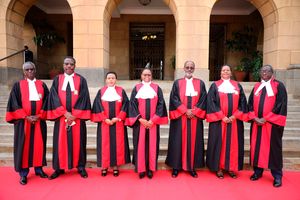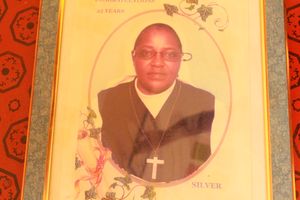Premium
Apex court and Kenya’s path to flourishing national values

lawyers at the Supreme Court on September 2, 2022. In its determination, the court will certainly respond to the changes instigated by its 2017 decision as evinced by various parties.
A profoundly absorbing national conversation has been underway, anchored by the proceedings before the Supreme Court. It is a constitutionally mandated occasion to gather the nation, in the wake of a socio-political cataclysm, in order to make sense and extract meaning by reasoning together. Superficially, it is presented as an election petition by or on behalf of an unsuccessful candidate, challenging the election or declaration of his political rival as the winner of the latest contest.
An examination of the institutional parameters of these special proceedings however reveals an intention to subtly expand their scope in order to produce a national ritual of reckoning with, resolving and laying to rest certain political demons which haunt this land from time to time and, at the same time, invoking the better angels of our nature.
The result is that the discursive agenda in and beyond the Supreme Court runs on two tracks, and their simultaneous resolution gives us a richer, stronger and more optimistic democratic experience.
One track of discourse relates to the conversation about the methods, institutions, agenda and results enlisted in declaring one candidate, as opposed to his rivals, to have been duly elected to be the next president of Kenya.
Role of each party
It involves the examination of the role of each party to the petition and how they affected the electoral enterprise in terms of their own performance and that of others.
Another track of discourse, embedded in the bowels of its more contentious parallel, is whether and how the ritual of election contributes to the improvement of our democracy in terms of the flourishing of our other national values and principles of governance.
The Constitution therefore deliberately institutes the tension apparent in interventions regarding the proper purpose and scope of proceedings pursuant to a petition challenging a presidential election.
There are people who feel that an expansive interpretation would convert the court into a virtual commission inquiry into all sorts of things, including the rules and practices of policy and politics, political party and political campaign management and strategies, that form the broader context of an election.
Others feel that confining proceedings to a simple statistical inquiry and how tallies fared implicitly constructs a permissive blind spot and normative black hole into which our democracy would inexorably slide.
The Constitution does not resolve this tension; indeed, it firmly but finely calibrates it into a teleological imperative to underpin well-grounded consciousness of the means and ends of elections.
Most certainly, the Supreme Court is not going to convert itself into the Independent Review Commission famously chaired by Johann Kriegler.
Neither is the court going to reduce itself to a mere secondary national tallying centre.
Court’s scope
The benchmark for the court’s scope was established in 2017 when it determined that an election is not an event, but a process.
The pertinent res gestae implicates a continuum beginning at the processes of the election management agency preparatory to the opening of the polling station, to the transmission of outputs all the way to the National Tallying Centre.
At each point, the feedback loop between the Independent Electoral and Boundaries Commission (IEBC) and its constitutional mandates is of immense materiality and forms the central subject matter of the discourse in the Supreme Court.
In studying the latest proceedings, we must understand that of the necessary parties, William Ruto, respondent as president-elect, has been a respondent as a deputy president-elect in 2013 and 2017, while Raila Odinga is the veteran petitioner in the same capacity.
The IEBC is a respondent for all time, and the Supreme Court the constant.
Fundamental implications
The Supreme Court resolved the complications spawned by its 2013 decision by expanding its scope of inquiry in 2017, with fundamental implications.
The IEBC also responded to 2017 by visibly instituting significant improvements in its overall stewardship of the election cycle and, in particular, of the presidential election.
William Ruto responded with a debut presidential campaign that put him over the constitutional threshold, underpinned by a tremendous strategic operation to secure the vote, document the process and perform its own computation in order to clarify its position vis a viz IEBC, thereby giving Kenya Kwanza supporters much confidence in their leaders’ capacity.
For his part, Raila Odinga, no doubt emboldened by his insurgent 2017 Supreme Court foray, merely reproduced his operational facsimile for 2022, boldly advertising his disinterest in adaptation, not even conforming to the minimum requirements necessitated by the Supreme Court’s determination of his petition. It’s awkward.
The Supreme Court’s 2017 decision dictated how presidential campaigns and IEBC responded strategically to the legal framework.
In its determination, the court will certainly respond to the changes instigated by its 2017 decision as evinced by various parties.
The dynamic sequence of adaptive iterations trace an evolutionary path towards constitutional entrenchment and a more spectacular flourishing of national values.
Mr Ng’eno is an Advocate of the High Court of Kenya and a former State House speech writer. @EricNgeno





